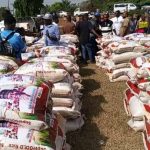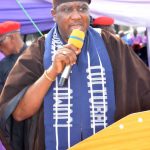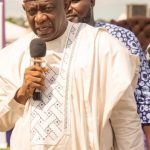Kano Receives Over N42 Billion LG Allocation In Two Months
By Bala Salihu Dawakin Kudu, Northern Bureau Chief
May 16, 2025
In a remarkable surge of federal funding, the Kano State Government has been allocated a total of N42.8 billion for the first two months of 2025. This substantial inflow of funds, earmarked for the state’s 44 local government areas (LGAs), highlights Kano’s position as the leading recipient of federal allocations among the states in the Northwest region.
The breakdown of the figures is revealing. In January, Kano received N19.5 billion from the Federation Account Allocation Committee (FAAC), followed by a larger allocation of N23.3 billion in February. With these amounts, Kano remains the dominant force in the region’s fiscal landscape, surpassing neighboring states and setting the stage for greater local government expenditure.
Notably, Nasarawa Local Government Council emerged as the highest beneficiary of this disbursement in February, receiving an impressive N911 million. Other LGAs such as Dala (N741 million), Gwale (N684 million), Kano Municipal (N676.5 million), and Ungogo (N671.1 million) also saw substantial allocations, reflecting a targeted focus on urban and economically dynamic areas.
However, the hefty financial inflow has raised questions about the tangible impact on local development. Despite receiving such large sums, many residents across Kano’s urban and rural districts continue to face significant challenges, from deteriorating infrastructure and overcrowded schools to insufficient healthcare services, especially in the more remote parts of the state. This stark contrast between the influx of funds and the reality on the ground has prompted local analysts and concerned citizens to call for greater accountability.
Local governments in Kano, like elsewhere in Nigeria, are often criticized for their poor implementation of developmental projects. Issues such as low-quality road construction, unreliable water supply, and underfunded educational institutions persist despite the substantial federal allocations. The question on many lips is: Where does all the money go?
One of the most pressing concerns lies in the issue of transparency and autonomy in local government finances. Although a landmark Supreme Court ruling mandates the direct disbursement of federal allocations to local governments, many stakeholders believe that state governments continue to wield considerable influence over the funds. Allegations of mismanagement, corruption, and diversion of funds to non-priority areas are rampant, leaving many to question whether these allocations are being used to genuinely improve the lives of ordinary citizens.
Advocates for local government autonomy argue that a more independent and transparent system would allow communities to have greater say in how their funds are allocated and spent. In a state as large and diverse as Kano, where both urban and rural areas have unique needs, empowering local governments and ensuring that funds are allocated equitably could be the key to addressing the persistent infrastructure gaps and social challenges.
Experts are increasingly calling for a rethinking of Kano’s approach to governance, with an emphasis on fiscal responsibility, transparency, and community involvement in budgeting. For the people of Kano, the question remains: How long can they wait for the vast sums of money to translate into meaningful development? The true test of governance in the state will not be measured by the size of the allocations, but by the tangible improvements felt in the daily lives of its citizens.
As Kano continues to lead in the receipt of local government allocations, all eyes are on the state government and its local councils to ensure that these funds are effectively utilized for the benefit of the people. Only time will tell if the substantial financial flows will lead to a lasting transformation for Kano’s residents, or if the status quo will persist.










